Book Review: Reiki, A Comprehensive Guide, by Pamela Miles
(Publisher's note: All books reviewed by The Reiki Digest are also available for sale on this site.)
Reiki: A Comprehensive Guide
Pamela Miles
Tarcher/Penguin
2006
ISBN 978-1-58542-474-0
Best known for the work she has done to bring Reiki into hospitals and other medical settings, Reiki Master Pamela Miles now ventures into the mainstream of publishing with a book that is thoughtful, informative, enlightening, but perhaps misnamed. It is, as Miles explains in the introduction, “not The Reiki Gospel According to Pamela, nor is it The Reiki Rule Book, but simply a Reiki companion.” As such, the book is a valuable introduction for those unfamiliar with Reiki, although the average person thinking of becoming a Reiki client or student might not begin that quest with a 265-page book. If so, that potential Reiki client would find one and only one Reiki organization mentioned, and a controversial and exclusionary one at that. Unfortunately, that is all too typical of the Balkanization that still inhibits Reiki's credibility. A true comprehensive guide would be more inclusive. Ultimately, that is an issue that all of us in the world of Reiki must deal with: Reiki itself is by definition universal and transcendent, not limited to any single lineage.
As a practitioner of Reiki and other natural healing arts, I am profoundly grateful to Miles for all she has done for Reiki, and for integrative medicine. Not only is she a master at Reiki, she is a master of the politics of health care as well as scientific research. Miles has made herself a strong, graceful bridge between Eastern and Western medicine, and I hope she writes many more books about whatever aspects of healing she would care to address. I would read them all, just as I've read as many of her scholarly articles as I could find.
In covering the history of Reiki and describing its uses, Miles weaves in the kind of vivid, personal anecdotes that journalists love, the same kind of anecdotes that tend to be ignored by hard science. She deals deftly with the unfortunate but undeniable fact that much of what we learned about the origins of Reiki from Hawayo Takata, who brought the practice to America, was untrue. Whatever aspect Miles addresses, she always brings us back around to what really matters: Reiki works. Even if it can't be explained, it works. Reiki also meets the most important qualification of the Hippocratic Oath: it does no harm.
Much of the book seems directed at a reader with no prior information or conceptions about Reiki, who presumably would be curious enough to read more than 50 pages before reaching an extensive section on choosing whether to become a client or a student, and then choosing a practitioner or teacher. As Reiki does no harm, even when practiced by the relatively inexperienced, the recommendation that in seeking a professional, “it's reasonable to look for someone with years of experience” seems a bit unnecessarily cautious. After all, even Reiki founder Mikao Usui had only four years from the time he developed the Reiki method until his death, and Dr. Chujiro Hayashi, the student who carried on Usui's legacy, had but a year of study and practice before Usui died in 1926, so during that time, they were the most experienced practitioners available. There is, of course, no substitute for experience, which is why more experienced practitioners understandably charge more for their services. Miles's list of questions clients might ask of practitioners is a good one, though it seems unlikely the average prospective Reiki recipient would screen potential practitioners so carefully. Her admonition against practitioners who combine Reiki with other modalities also seems overly cautious, particularly in light of the anecdotes she presents in later chapters about physicians and nurses using Reiki in their practices. It's certainly true that if you want only Reiki, you should specify that, just as you should make it clear that you want plain steamed rice if that's your preference. If you've never had rice before, that's probably the best introduction to it. But that doesn't mean there's anything wrong with other rice dishes.
What sets Miles apart as a practitioner is her emphasis on Reiki in the medical environment, so when she turns her attention to that realm in the final four chapters, the reader is rewarded with the solid grounding and authentic voice of a top expert on the subject who is clearly in her element. Miles could, and perhaps should, write an entire book focused on Reiki at the intersection of Eastern and Western healing arts. She urges patients who combine Reiki with conventional medical care to let their doctors know about their use of Reiki, making a strong argument for such disclosure. She presents a thorough overview of the scientific research done so far on Reiki, and goes on to offer some realistic suggestions for how further research might be done without much expense. Miles outlines the simple steps any practitioner could follow to track client demographics and their response to Reiki, primarily with the use of a simple visual analog scale for clients to use before and after each session. That may sound complicated, but not when you see how simple a visual analog scale is:
No Pain _______________________________________Worst Possible Pain
0 ___1___ 2___ 3___ 4___ 5___ 6___ 7___ 8___ 9__ 10
(In case the scale I've typed in here doesn't come through correctly on your browser, it's basically a line with "No Pain" on one end, "Worst Possible Pain" on the other, and the numbers 1 to 10 below for clients to use in describing their level of pain.)
That's all there is to it. Miles goes on to explain how the data collected using such basic measurements could be compiled by a neutral third party with complete anonymity for the clients involved and reliable, unbiased records. All practitioners of complementary and alternative healing methods, regardless of modality, should give these suggestions a try.
Another very do-able experiment Miles suggests is offering Reiki chair sessions to patients in the waiting room before they see their doctors or other health practitioners. That would be not only an interesting study, but one that could be done without major funding.
If you've read this book, please add your own review as a comment to this post.
Editor
The Reiki Digest











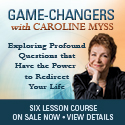






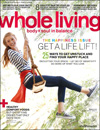

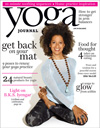
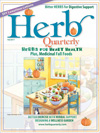
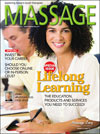
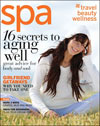
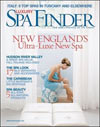
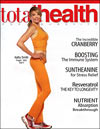






1 Comments:
Editor's note: The following comment was submitted on a different post, "What is Reiki?" As it is another review of the same book, it belongs here. Karen J. Gordon, who wrote the comment, has graciously agreed to permit its posting on The Reiki Digest despite the February 2006 copyright notice. Please note that The Reiki Digest carries a Creative Commons "some rights reserved" license, allowing copying and redistribution for noncommercial purposes with attribution.
Karen J. Gordon's comment:
At long last, an insightful and intelligent Reiki book appropriate for seasoned practitioners and medical professionals as well as individuals who are simply looking for an objective explanation as to what Reiki is, how it works, and whether or not they want to engage in Reiki treatment or training. In Reiki: A Comprehensive Guide, Tarcher/Penguin, April 2006, Pamela Miles offers an intriguing and thorough exploration of the many aspects of Reiki healing. In chapters examining subjects from "What is Reiki and How Can it Help Me?" to "Reiki Master Training," from "Reiki Practice, Continuing Support" to "Reiki and Integrative Medicine," Miles covers every important point concerning Reiki healing that I have encountered in my twenty-three years of Reiki practice, as well as raises questions and points of view I have yet to contemplate.
Reiki: A Comprehensive Guide, has received praise from such notable medical professionals and authors as Christiane Northrup, MD and Andrew Weil, MD, as well as others in the natural and allopathic healing communities. Larry Dossey, MD and author says, "Reiki is, increasingly, being incorporated into modern medicine because of one compelling reason: it works. Reiki Master Pamela Miles has written the best guide to this healing art currently available."
While honoring and clarifying the history and traditions of her own Reiki background, Miles exhibits respect for and recognition to the many different styles of practice which have developed since the time when Hawayo Takata first brought Reiki out of Japan and to the West. Miles, founding director for the Institute for Advancement of Complementary Therapies, says, "That is why it is important to create dialogue among Reiki masters of various lineages and practice styles, to foster greater respect within this highly diverse community."
Reiki self-treatment is emphasized as the foundation of practice whether the practitioner is simply using Reiki on herself, family, and close friends or is a professional bringing Reiki to her patients in a medical setting. Even as Miles discusses the complexities and challenges of developing a holistic model for research purposes, she embraces and encourages the essence of Reiki healing: It is simple. It is harmless. It is at once primordial consciousness itself, and our connection to, and experience of, that source.
Writing a book that is accessible to both novices and seasoned Reiki people as well as to medical professionals who seek to understand what Reiki is and why they should consider incorporating it into their conventional healing systems is no simple task. The author must be able to remember and access the elementary aspects of Reiki practice in order to bring those basics to the reader in a clear, understandable way. But she must also understand the scientific method and be able to communicate in the language of medical professionals.
Miles's thirty years of experience as an educator, clinician, and lecturer in natural healing, as well as her years of Reiki mastery, yoga and meditation practice provided the perfect grounding and foundation from which to write this lucid, intelligible, and distinctly unique Reiki book.
As Andrew Weil, MD says about the author, "Drawing from an uncommonly deep understanding of Reiki, Pamela Miles articulates the essence of healing in language accessible to both professionals and the public." I would add that in Reiki: A Comprehensive Guide, Miles opens her Reiki heart to us. She not only teaches what Reiki is and why it's an important holistic method of healing, but also shares with us some of her own personal experiences with Reiki: self-treatment and treating others in both non-medical and medical settings.
In the current and sometimes competitive climate of natural healing, which offers every conceivable method of Reiki instruction from sitting in the presence of a well-trained Reiki Master to receiving Reiki from a stranger over the Internet, Pamela Miles presents reason and simplicity. She says it best in her introduction: "There is not one way. In these pages, I share the path I am traveling in the hope that it will enrich your journey."
I have been enriched beyond my expectations. Miles's book has further opened my own Reiki heart. Through her expression of Reiki, my own experiences have been deepened. With each chapter, a nod of my head. Yes, that is the Reiki I know and love.
© February 2006 Karen J. Gordon
Karen J. Gordon is a freelance copyeditor/writer and independent Reiki Master Teacher. Contact: http://www.karenjgordon.com.
Post a Comment
<< Home